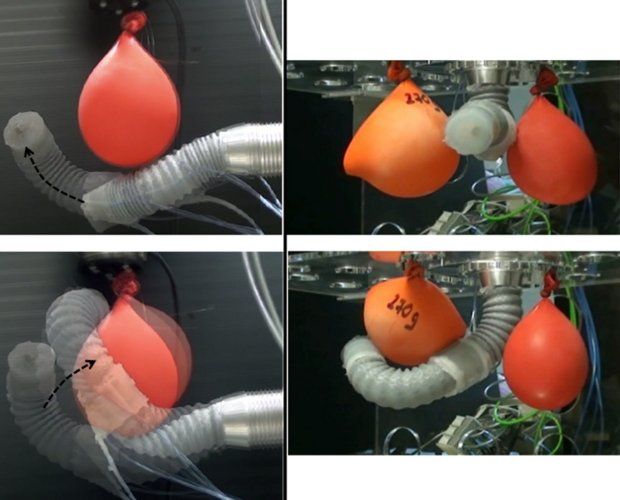A study published in today's issue of the Institute of Physics' journal Bioinspiration and Biomimetics describes a novel robotic arm that could one day replace traditional surgical tools.
The robotic arm, designed and developed by a team of researchers in Italy, looks and behaves like an octopus tentacle, meaning that it can bend, stretch and navigate cluttered environments.
If need be, it can switch to being completely rigid and staying put, waiting for further instructions. As explained by the team of scientists who created it, the robotic arm is perfectly malleable.
The robotic arm comprises two interconnecting modules, each packing three cylindrical chambers. It is by controlling the inflation of the chambers that the modules are made to bend and stretch.
A flexible membrane inside each of the modules is what makes the robotic arm rigid or soft. Thus, this membrane contains a material that hardens the structure when vacuum is applied.
Experiments carried out in the lab have shown that the arm can stretch to 62% of its default length and bend to angles of up to 255 degrees. Stiffness can be increased in the range of 60% to 200%.
The robotic arm was especially designed for surgical interventions
Being as malleable as it is, the robotic arm is argued to be the perfect tool to access tricky organs and tissues in the body that would otherwise be rather difficult to reach.
In fact, the robotic arm was especially designed to make it easier for surgeons to operate in remote and confined body regions. Given its flexibility, it could replace several surgical instruments at once.
In doing so, it would help reduce the number and the size of the incisions that must be made to complete a surgical intervention. In turn, this would speed up the recovery process.
“Traditional surgical tasks often require the use of multiple specialized instruments such as graspers, retractors, vision systems and dissectors to carry out a single procedure,” said researcher Tommaso Ranzani.
“We believe our device is the first step to creating an instrument that is able to perform all of these tasks, as well as reach remote areas of the body and safely support organs around the target site,” he added.

 14 DAY TRIAL //
14 DAY TRIAL // 

